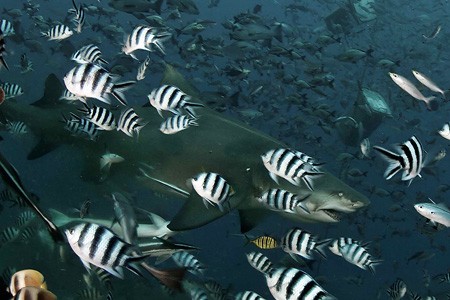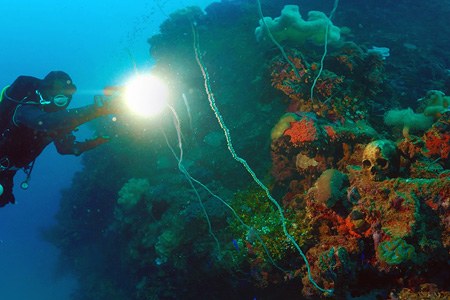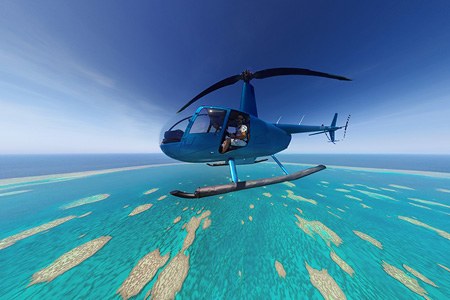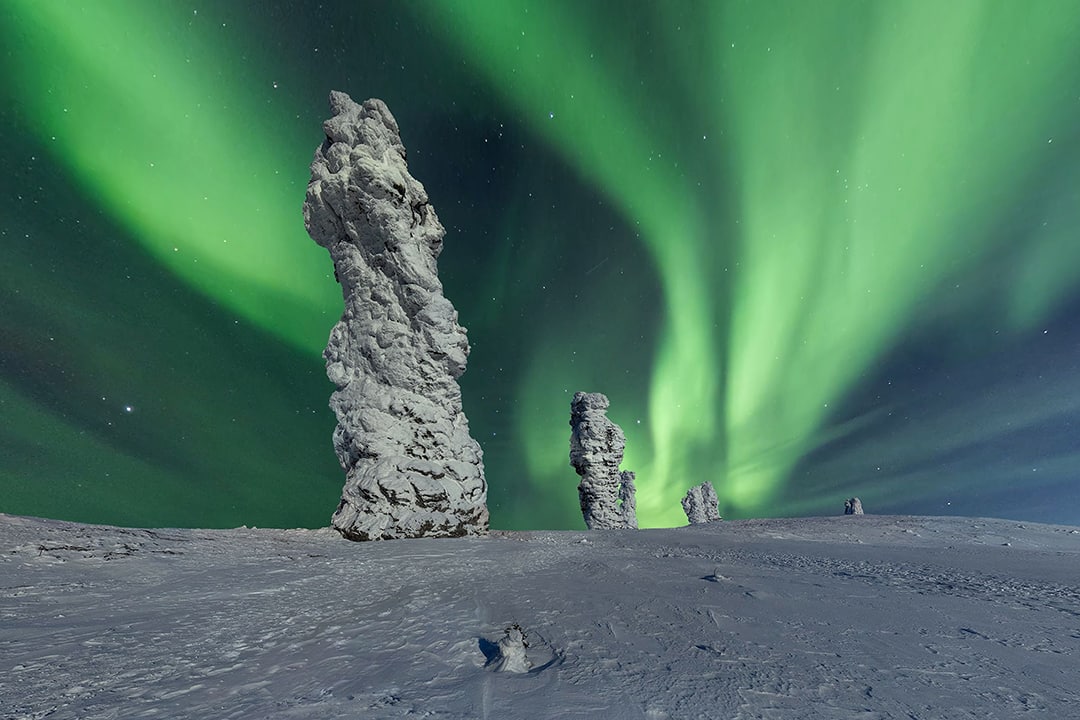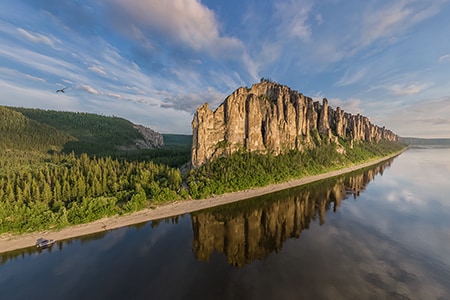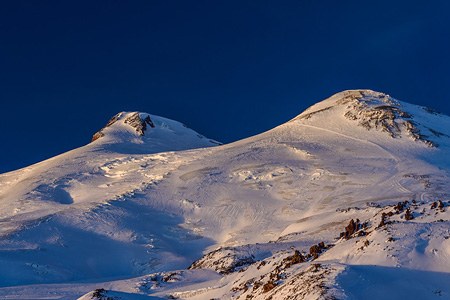70 Islands, Palau
In March 2020, I went to Palau for two weeks – on a diving safari. And then the pandemic struck. My trip had to be extended, as I couldn't fly back for another three months, until May.
The alluring word "Palau" is a name that many people have probably heard, but not everyone actually knows what it is.

Here's a quick rundown. Palau is an island country consisting of three hundred islands with a population of about 20,000 people. Most people live on the two largest adjacent islands. Palau is located: 1,000 km (621 mi) north of Indonesia, 1,000 km (621 mi) east of the Philippines, 3,000 km (1,864 mi) south of Japan. I traveled there like this: 8.5 hours on the Moscow-Seoul flight, then a long layover (but you can get a transit hotel at the airport), and another 5 hours on the Seoul-Koror flight.
Even before the trip, I was informed by the ship's captain that I would probably be diving alone during the second week, as many clients were canceling trips because of the coronavirus outbreak. In fact, I was alone on the ship immediately upon arrival: a large group of German divers had been turned home by a call from the embassy at the airport in Manila, the capital of the Philippines. They were told that if they did not return to Germany right away, they would not be able to fly back later. They were only 1 hour away from reaching Palau, but I learned all that later.
Anyway, it turned out to be a good time for diving. Now I was leisurely enjoying the world-famous dive sites, which used to be crowded with dozens of people, alone.
But first things first. The Blue Corner is reputed to be Palau's hallmark. Guides say that some divers who come for one week are willing to dive only there for the whole week. But, in my opinion, there is an even more interesting place located near the Blue Corner – the Blue Holes reef.

The Blue Holes is four vertical wells with a diameter of about 10 m (33 ft) each, which at a depth of 15-20 m (49-65 ft), converge into one spacious cavern, and the cavern has two exits to the ocean. So all in all, there are 6 blue holes. The amazing topography was formed by erosion millions of years ago, when the water level was lower than it is today.
If you enter the Blue Holes at noon, when the sun's rays fall vertically into the wells, you can see dazzling pillars of light that fill the water with a magical glow – it is an unforgettable view. If the current is in a favorable direction, the most swift divers can "kill two birds with one stone" in one dive: descend into one of the wells at the Blue Holes, go with the current and finish the dive at the Blue Corner.

Another "attraction" of this reef is the small cave called The Temple of Doom. You can get here through the seventh hole: a narrow entrance, located at a depth of about 25 m (82 ft) inside the Blue Holes reef. This route is considered difficult: an untrained diver can easily get lost inside. You can dive here only if you have a certificate, special equipment and training. But sometimes, some guides who know the cave well take regular divers to the Temple of Doom too.
The Temple of Doom is known for the well-preserved skeleton of a large tortoise on one of the plates at its far end. When at a depth of about 30 m (98 ft), in the midst of total darkness and black silence, the flashlight flashes a white skull and bones – it gives you goose bumps. There are quite a few other chilling things here: after getting used to the skeleton of the tortoise and concentrating on taking pictures, I shuddered again with horror when something unidentifiable popped out of the darkness into the light. It flew over my head right next to my mask. Later in photos, I saw the silhouette of a caranx or stingray with its "wings", but at that time the cave seemed uninhabited.

Afterwards, while exploring the Temple of Doom, we found the remains of several more tortoises in various secluded places, but as scattered piles of bones. One can only wonder if the animals came to this place to die of their own will, or if they died due to the lack of air, not being able to find their way out of the Temple of Doom.
Another of Palau's hallmarks is Jellyfish Lake. It appeared about 15,000 years ago. Now the lake is not connected to the ocean, although sea water does get into it through cracks in the limestone. The outside world has not had much impact on the jellyfish, so a unique ecosystem has formed here.
It is impossible to determine the exact number of jellyfish, but according to rough estimates, there are about two million of them, and this is what has made the lake famous all over the world. The most interesting feature of these jellyfish is that they are completely harmless. A person who touches a regular jellyfish most often ends up burned or even dead: defending themselves, the sea animals release a poisonous stinging substance through their tentacles. But here jellyfish have no natural enemies, and over thousands of years of peaceful life, they have lost their defense mechanism. The concentration of toxins has been reduced to a minimum, and only if you accidentally touch the jellyfish with a sensitive part of the skin – for example, your lips or neck – you can feel a slight sting. That's why it's safe to pick up jellyfish or swim next to them in Palau.

Another unusual feature of this lake is that its water is saturated with hydrogen sulfide, phosphorus and ammonia in enormous concentrations at a depth of about 10 m (33 ft). Only rare hardcore bacteria can survive in this toxic environment, but humans should not dive that deep: toxic substances will enter the body through the skin, leading to serious health problems. Luckily, these two completely different layers do not mix, and at the surface of the water, all living organisms feel well.
Several years ago, the lake was closed to the public due to a noticeable decrease in the number of jellyfish. There are suspicions that this may be related to the toxicity of the sunscreens that hundreds of tourists apply to their bodies every day before diving into the water.
But I was lucky, the lake was reopened, and I visited it four times. Normally, a snorkeling session lasts 45 minutes because of the large number of people who want to do it, but since I was alone, the rangers did not limit me in time, so I swam for 3-4 hours.
When I did it the first time, the guide told me, "Swim to the center of the lake, the jellyfish should be there." But I was unlucky: I only found a couple of dozen specimens and was bummed. The second time, I took a drone and flew it around the entire lake in 10 minutes. The 2 million jellyfish mentioned on Wikipedia had gathered in a small group near the shore at the far end of the lake, which was about 500 m (546 yd) away.

I took a breath, gathered my shooting equipment, and swam off. I had been swimming for about 20 minutes slapping the water with my fins, holding a bulky camera with flashes in front of me, before I finally found myself in a real soup of jellyfish. It is impossible to describe the feeling of pushing aside dozens of relentlessly moving little yellow bodies with tentacles. At first I just lay on the water and tried to make sense of what was happening. But one gets used to everything, so I turned on the camera and started shooting.
Today, the Internet is filled with thousands of images with countless photos of jellyfish from this lake. I wanted to do something new. It was only on my fourth visit to the lake that I was able to come up with and implement a technically challenging shoot – a 360 degree VR split panorama which you can see in this virtual tour.
When I was spending the second month on the ship in Palau, I had already dived in every possible dive site many times. Choosing a place for the next dive became the biggest challenge, and at this difficult moment, I was approached by a Chinese guide whom I had made friends with. His English was not very good, but he still managed to explain that he had found a hole of some kind in the caves and that it was possible to get into it. To do this, one had to first get undressed in the water, take off the tanks, fins, climb the wall, and then crawl a few meters (yards) in this hole in the mud.
The guide warned me that the hole was very narrow, but after sizing me up, he concluded that I could probably fit through. After that, he said, another cave would open at the exit, but already without water. It's stuffy in there, rather hard to breathe, but still possible, and the reward for all the suffering is a "very good look". I agreed, and I was right!

So, the search for the mysterious hole began. First, we dived into the Chandelier cave, a very famous place in Palau. Here, there are four halls with stalactites, one after the other. In each hall, you can dive up and find yourself in a small air pocket, the size of which depends on the tide. One of the guides' fun games is to swim up to a stalactite and lick a drop of fresh water, which has seeped through the soil from the surface, from its tip with their tongue.

If you go all the way to the end of these caves, in the fourth, smallest hall (only a few meters in diameter), somewhere at human height in the corner, you can see a small opening. The best time to get to it is at high tide, when the water rises high and there is no need to climb vertical rocks.
We dived into the air pocket of the fourth cave, took off our equipment in the water – vests, fins, masks; blew up our vests and strapped on whatever could drown. Leaving it all floating in the water, wearing nothing but wetsuits, we climbed into the hole.
The Chinese friend was small and nimble; he slipped in easily, like a knife through butter. But I was already old and big, so I had to do a lot of wiggling through the wet clay and working with my shoulders. In the end, after a few minutes, when I was already exhausted from crawling and breathing the stuffy air, the flashlight I was pushing in front of me illuminated a rather large hall with stalactites and stalagmites, beyond which in the flashlight beam I could see several other smaller halls in the distance.
The majestic columns descended in the half-light in fanciful shapes from somewhere in the ceiling, equally intricate columns rose to meet them from the ground, the silence was broken only by small drops of water falling from the stalactites and large drops of sweat dripping from my forehead.
I pictured myself on the threshold of an unexplored geographical discovery, rose from my knees, and shined the flashlight on the nearest wall. It had an inscription in big letters: "Igor was here".
A bit later, I saw that practically the entire cave was covered with such inscriptions in different languages. At one spot, almost at the ceiling, I also found the name of my Chinese guide. Honestly, I can't imagine how he got up there – he couldn't have brought a stepladder in here!
Apart from the underwater scenery, the territory of Palau is very beautiful from the air too: hundreds of "fuzzy" green islands in the turquoise sea, quiet lagoons, coral reefs, surrounded by dark blue waters of the Pacific… All this leaves an indelible impression on a person who lives in the middle of Russia.

One of the most beautiful location for aerial photography was a Ngerukewid, also known as 70 Islands. It is a set of islands located inside the Palau's lagoon. Small raised coral islands range in size from 0.1 to 48.5 ha and take area of 87.3 ha. The islands and the area around them are protected under the Ngerukewid Islands Wildlife Preserve. This area is closed for tourists. I was lucky to get a permission because of the Covid time. No tourists time gave a unique opportunity to see that most beautiful places of Palau. 70 Islands Preserve you can see now in this virtual tour.

I used my drone quite often, and during my "confinement" in Palau, I flew about a thousand kilometers (621 miles), so in the end I was able to add some nice aerial photos to the underwater shots. Now the drone situation in Palau, like everywhere else in the world, is getting complicated and regulated, and flying them already requires permits. Luckily, it doesn't cost much and still involves relatively little paperwork there.
Photo and Text: Oleg Gaponyuk
24.12.2021
Read more
Photogallery 70 Islands, Palau. 5
70 Islands, Palau. 5
 70 Islands, Palau. 8
70 Islands, Palau. 8
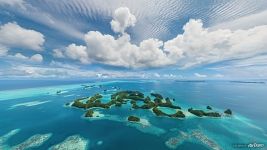 70 Islands, Palau. 18
70 Islands, Palau. 18
 70 Islands, Palau. 2
70 Islands, Palau. 2
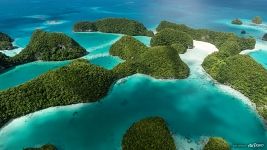 70 Islands, Palau. 24
70 Islands, Palau. 24
 70 Islands, Palau. 13
70 Islands, Palau. 13
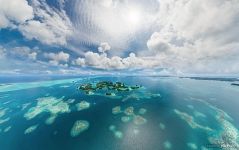 70 Islands, Palau. 16
70 Islands, Palau. 16
 70 Islands, Palau. 12
70 Islands, Palau. 12
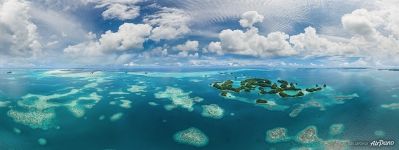 70 Islands, Palau. 21
70 Islands, Palau. 21
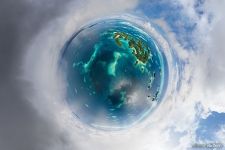 70 Islands, Palau. 4
70 Islands, Palau. 4
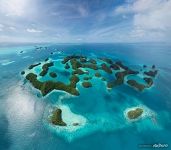 70 Islands, Palau. 25
70 Islands, Palau. 25
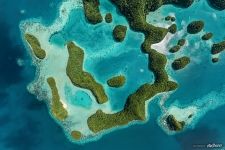 70 Islands, Palau. 1
70 Islands, Palau. 1

